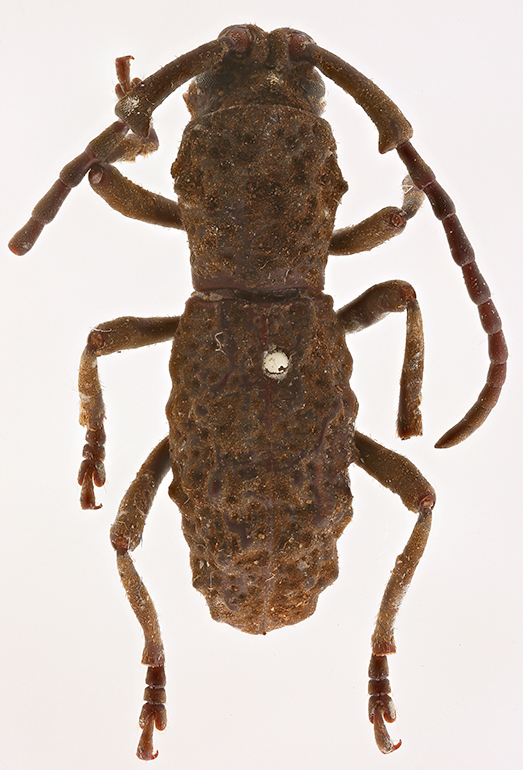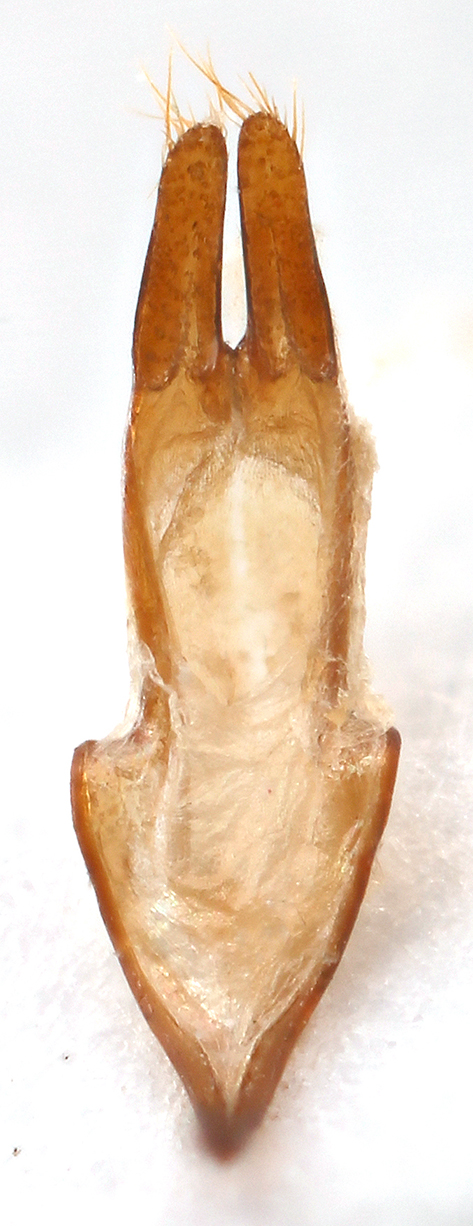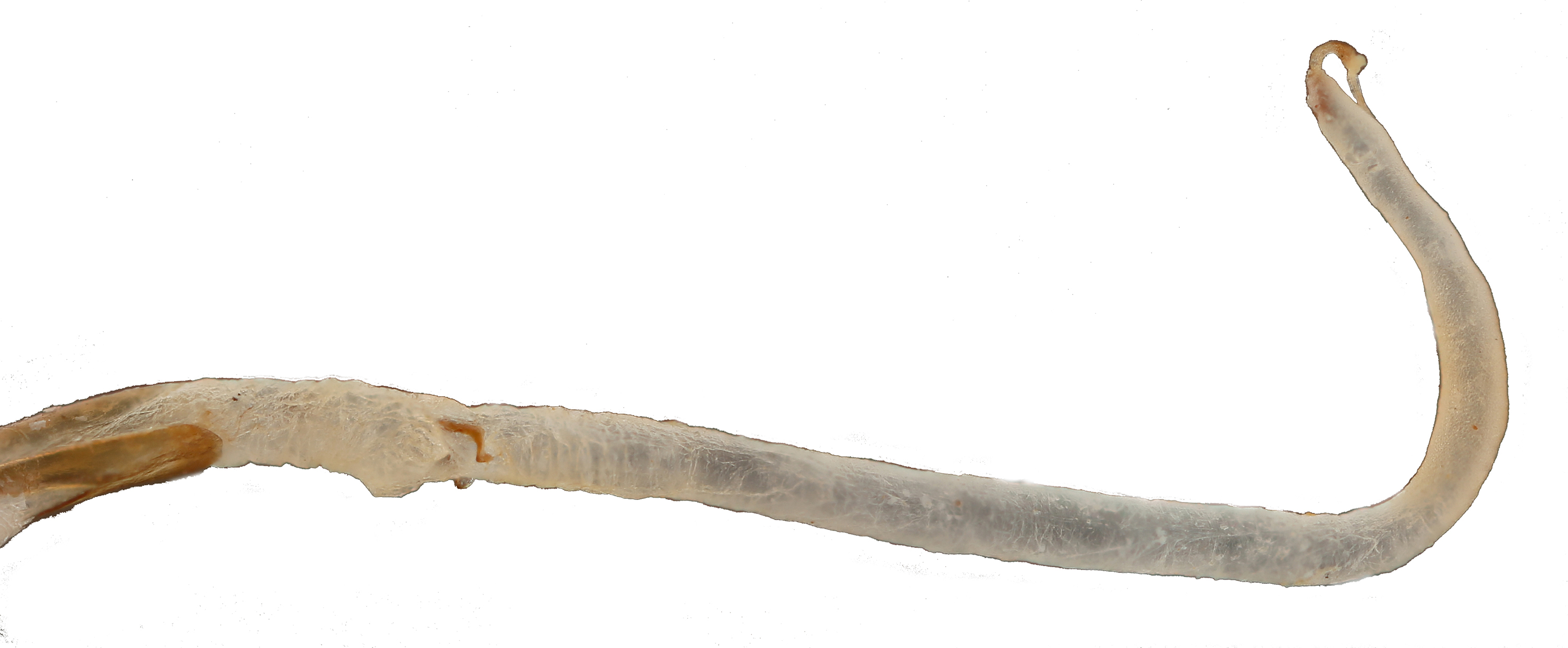| Author |
 Topic Topic  |
|
|
coptosia
Member Nathrius
Russia
47 Posts |
 Posted - 15/06/2020 : 09:31:29 Posted - 15/06/2020 : 09:31:29



|

428.31 KB

349.66 KB
Philippines |
Edited by - Xavier on 18/06/2020 07:30:19 |
|
|
Xavier
Scientific Collaborator
    
France
12328 Posts |
 Posted - 15/06/2020 : 12:36:52 Posted - 15/06/2020 : 12:36:52



|
| Anexodus aquilus Pascoe, 1886 is a species from Borneo. |
 |
|
|
coptosia
Member Nathrius
Russia
47 Posts |
 Posted - 15/06/2020 : 15:15:51 Posted - 15/06/2020 : 15:15:51



|
| yes I know. This specimen is from the Palavan, separated from the northern part of Borneo (where distributed A. aquilus)by a narrow strait. I don`t find any good differences from A.aquilus on base revision of the genus. And I don`t know any Anexodus from Filippines. May be label is wrong... |
 |
|
|
Xavier
Scientific Collaborator
    
France
12328 Posts |
 Posted - 15/06/2020 : 16:00:26 Posted - 15/06/2020 : 16:00:26



|
Very interesting data !
Your specimen seems a male; may be you should compare aedeagus with Gabris revision.... |
 |
|
|
coptosia
Member Nathrius
Russia
47 Posts |
 Posted - 15/06/2020 : 23:32:35 Posted - 15/06/2020 : 23:32:35



|
| Unfortunatelly, we can use only lateral lobes, because picture apical part of penis unavailable. Description this structure uninformative. In my specimen, lateral lobes very similar to picture of l.l. A.aquilus in Gabris revision. |
 |
|
|
Xavier
Scientific Collaborator
    
France
12328 Posts |
 Posted - 16/06/2020 : 07:22:48 Posted - 16/06/2020 : 07:22:48



|
| Is it the first data of a Morimopsini species in Philippines ? Will you write something about it ? |
 |
|
|
coptosia
Member Nathrius
Russia
47 Posts |
 Posted - 16/06/2020 : 23:17:03 Posted - 16/06/2020 : 23:17:03



|
| probably in work with other dates about Cerambycidae Oriental and Australia |
 |
|
|
dryobius
Member Rosenbergia
   
USA
1889 Posts |
 Posted - 18/06/2020 : 03:05:30 Posted - 18/06/2020 : 03:05:30



|
Can you provide any information about the specimen? Palawan, Mindanao, Luzon?
It is difficult to believe that a flightless species occurs in Borneo and the Philippines.
There are very few species, with wings, that are found on both Borneo and Mindanao. |
 |
|
|
coptosia
Member Nathrius
Russia
47 Posts |
 Posted - 18/06/2020 : 14:22:15 Posted - 18/06/2020 : 14:22:15



|
| Palawan. This island was connected with Borneo in Pleistocen. |
 |
|
|
Jérôme Sudre
Member Rosenbergia
   
France
1776 Posts |
 Posted - 20/06/2020 : 12:59:21 Posted - 20/06/2020 : 12:59:21



|
Hello
I don't think it's A aquillus Pascoe! Indeed A aquillus presents particularly high elytral tubers, the lateral spine is quite developed (not here !) moreover A aquillus presents on its lateral sides of the pronotum a very clear tawny yellow pubescence (not here), the tibias present a yellow pubescence which clearly contrasts with the femurs.
I think this is probably a new species ? But look on your side.
I have in my collection a specimen of A aquillus compared to the type in the British museum and your specimen (in my eyes) does not correspond to it for me ! Now it's a picture so I can go wrong...
new species or can also be described in another genus??
|
Edited by - Jérôme Sudre on 20/06/2020 13:00:41 |
 |
|
|
dryobius
Member Rosenbergia
   
USA
1889 Posts |
 Posted - 20/06/2020 : 16:15:02 Posted - 20/06/2020 : 16:15:02



|
In Gabris et al, 2017, please refer to Figs. 9, 10, 11. You will see extreme variation in the elytral tubercles of 3 different specimens of Anexodus aquilus. All of my 7 specimens of A. aquilus have distinctive, tawny (not yellow, perhaps grayish-white) pubescence around the scutellum and on the upper lateral edges of the pronotum.
Microdolichostyrax hefferni Gabris et al, 2016, is also similar, and does not have the visible pubescence similarly to the specimen from Palawan.
Thus, I don't know if the specimen can be identified by a photograph.
However, per the key to genera [2016] in his first paper
1 Antennomere II distinctly longer than antennomere III.................................
................................................................................ Anexodus Pascoe, 1886
– Antennomere II shorter than antennomere III.............................................2
… the specimen should be placed in Anexodus. |
 |
|
|
Jérôme Sudre
Member Rosenbergia
   
France
1776 Posts |
 Posted - 20/06/2020 : 19:18:01 Posted - 20/06/2020 : 19:18:01



|
Yes it is a picture so indeed difficult to make a judgment, unless it is a very characteristic species, which in Morimopsini, Phrissomini and many others is sometimes difficult.
On the other hand yes it is indeed an Anexodus in my eyes the scape is quite characteristic. Besides, the work of Gabris and al specifies it well ! There is no doubt for me, but what I wanted to say in my previous post is that it is also possible that species belonging to characteristic genera have sometimes been classified within other genera and sometimes tribes (in Prosopocera for example or in Theocridini). In any case it would be necessary to take a closer look at this specimen.
In addition I could also see some Anexodus aquilus (less than 10 and from different collectors) and all were relatively stable with these tawny bands on the sides of the pronotum, relatively high tubers but obviously variable in height. But I won't say any more because I don't know these regions nor the fauna that characterizes it?
Moreover yes, Borneo is quite close to the Philippines, knowing that a string of islands may have been linked to Borneo (but I have no idea of the geological history of this region).
|
 |
|
|
coptosia
Member Nathrius
Russia
47 Posts |
 Posted - 23/06/2020 : 19:58:50 Posted - 23/06/2020 : 19:58:50



|
Hi all)). Beetle has caused an unexpectedly large interest)).
On photos - male genital this specimen. I don`t see distinct difference in shape of lateral lobes from picture l.l. A.aquilus in Gabris revision.

461.88 KB

499.32 KB |
 |
|
|
Jérôme Sudre
Member Rosenbergia
   
France
1776 Posts |
 Posted - 24/06/2020 : 17:34:43 Posted - 24/06/2020 : 17:34:43



|
| Yes indeed! Then A aquilus Pascoe!. As what as a lot of apterous groups (Phantasis among others they are morphologically variable, moreover in Phantasis within the same population the genitalia them, were also variable), but these are Anexodus.... But here, it seems that it is indeed the same thing (mea culpa)... |
 |
|
| |
 Topic Topic  |
|


